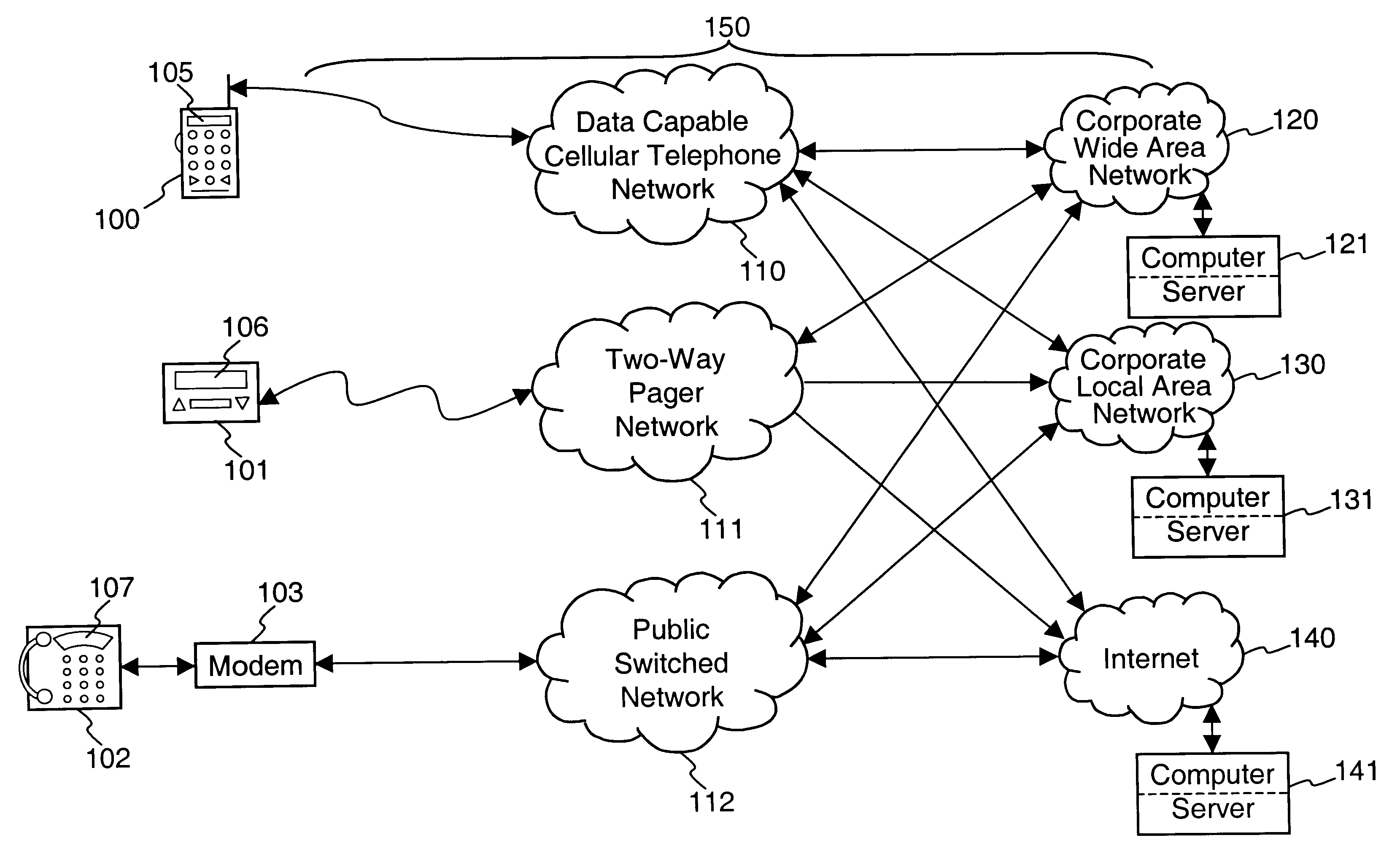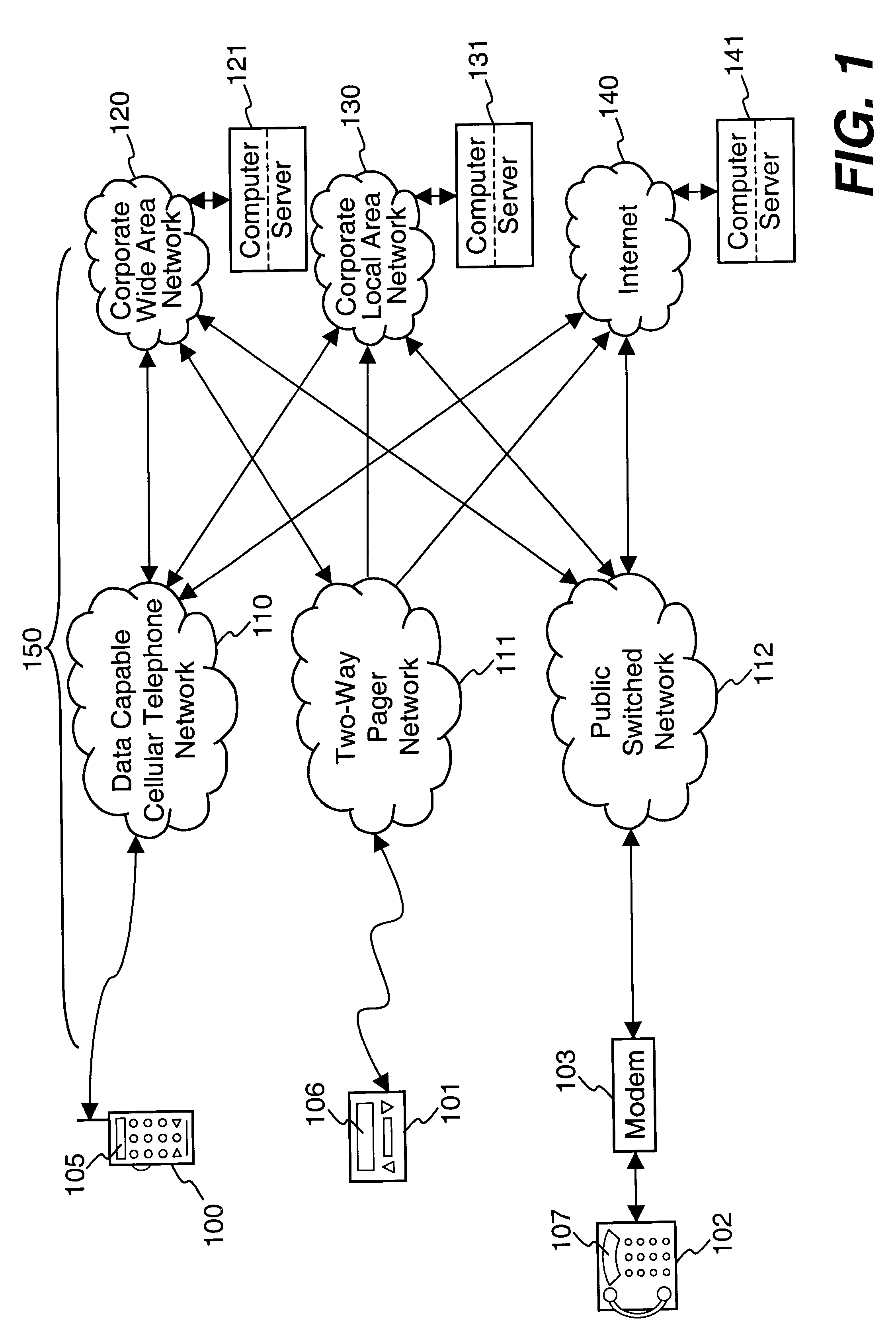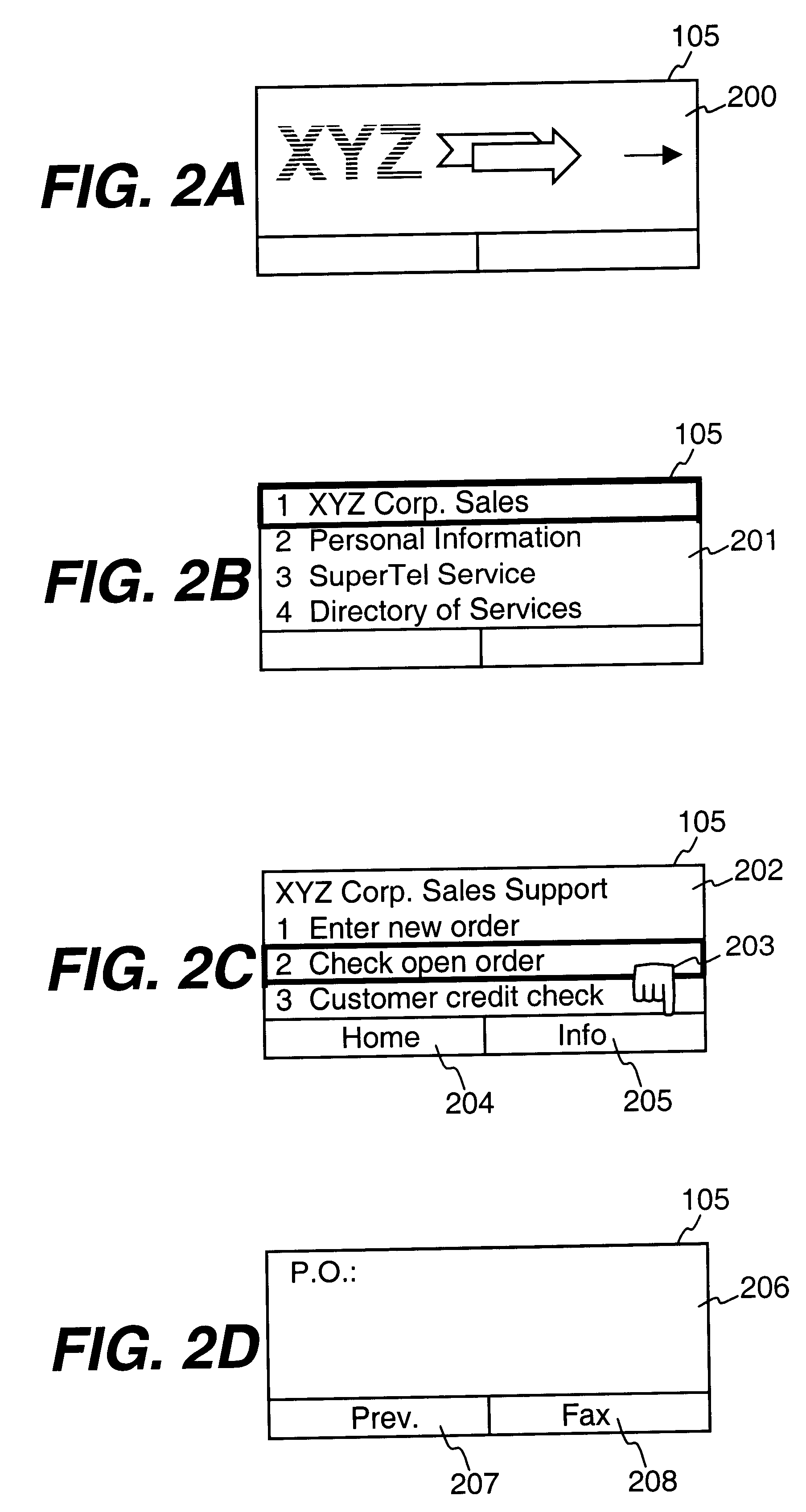After years of research and development, and hundreds of millions of dollars' investment by some of the largest companies in the field such as Motorola, AT&T, Sony, Matsushita, Phillips and IBM, the results have been nothing but disappointing.
Fundamental design and cost problems arising directly from the approach taken by the designers of these intelligent communication devices have limited widespread
market acceptance of these devices.
The combination of a
wireless communication module with a computing module leads to a device that is too bulky, too expensive, and too inflexible to address the market requirements.
The combination of the two modules is too large and too heavy to fit in a user's pocket.
In addition, the cost of these devices is close to the sum of the cost of the
computer module and of the communications module, which is around a one thousand dollar end-user price.
Even with a 20% compound cost decline, it would take five years for the combination units to meet today's customers' price requirements.
It is therefore unlikely that devices designed by combining a computer and a wireless module, no matter how miniaturized and cost reduced, can satisfy the cost requirement of the market during this decade.
The price sensitivity for intelligent communication devices and the size limitations means that an intelligent
communication device cannot support the amount of core memory (RAM), a hard disk or non-erasable memory, or a traditional
floppy disk drive, commonly found on computers.
These limitations close the traditional routes for delivering new applications or updates to intelligent communications devices.
This scheme lacks the flexibility needed to run the thousands of applications required to address the fragmented requirements of the market and provides no simple method for updating the applications after the device has been sold.
The
time delays can range from 30 seconds up to 10 minutes, which makes SMS unsuitable for real time applications.
After a few years of deployment in Europe, SMS implementations have been limited to notification services such as two-way
paging and voice mail notification.
SMS as a medium is unsuited to building applications which allows the retrieval, manipulation, to and storage of information.
This makes ADSI unsuitable for wireless networks where bandwidth is at a premium and "air efficiency" is one of the most sought after qualities.
The lack of
processing capability in the telephone and the
high bandwidth requirements of ADSI have prevented it from being considered by the industry for implementing intelligent wireless devices.
The functionally provided to the user of the two-way communication device is limited only by the applications available on a server computer that is accessible to the user over the two-way data communication network.
Further, if the user of the platform did not modify the
operating system as new versions of the
operating system were released, at some point in time, the platform would no longer be capable of
processing a new version of an application that required a current version of the
operating system.
Further, if the user of the platform did not modify the operating
system as new versions of the operating
system were released, at some point in time, the platform would no longer be capable of processing a new version of an application that required a current version of the operating
system.
This limitation has led prior art attempts at intelligent communication devices to design closed systems with fixed functionality.
Such devices can neither adapt nor be adapted to the fast changing requirements of the
market place and so have not met with market success.
In addition, since all the information needed by the client to generate a
user interface and all information necessary for the client process to respond to any input data is included in the message, the computer server does not retain any state information concerning the information transmitted to the client process.
Consequently, the computer server is stateless.
These hardware resources are often available, but unused in a data capable cellular telephone because of the indivisibility of
memory chip packages.
However, the client module is architecture described more completely below limits the number of changes that must be made.
The uses of wireless communication device 100 are limited only by the availability of applications on server computers.
Thus, the user interfaces are limited only by the applications accessible to the two-way data communication device.
Despite the robustness of the client module in interpreting a wide variety of application, typically, the client process is lightweight and thus requires only lightweight resources, e.g., 60 Kbytes of read-only memory (ROM) for the client module, 10 Kbytes of
random access memory (RAM), and less than one million
instructions per second (MIPS) of processing power.
Consequently, the user of a two-way data communication device is limited only by the applications provided on the server computers.
The terminal interaction language allows easy
parsing on the two-way data communication device, which in turn makes the client smaller than a client for the telephone interaction description language that is readable by humans, but is not optimized for
parsing by a
machine.
Also, this particular form of the method is used because a specific server connection is established by cellular telephone 700 and so identification of the server is unnecessary.
However, as indicated above, in this embodiment client module 702 requires that the user make a choice and does not allow use of the next key.
This leads to some
ambiguity when using the telephone keypad to enter text.
For example, to enter the letter s, the user would first press the seven key that is labeled with letters p, r, and s. Next, the user would press the three key to select the letter s. While this method may work well for short sequences that consist of only three or four letters, the method does not work well for English text.
For example, if the user has already entered th and then presses the three key that is labeled with letters d, e, and f, almost always the desired next letter is the letter e. Therefore, making the user press the two key is an extra and unnecessary step.
This approach limits local services to the same constraints as remote services.
Routine NM_GrowDataLength grows the
data segment by a given length and also may cause the location of the data to change.
 Login to View More
Login to View More  Login to View More
Login to View More 


